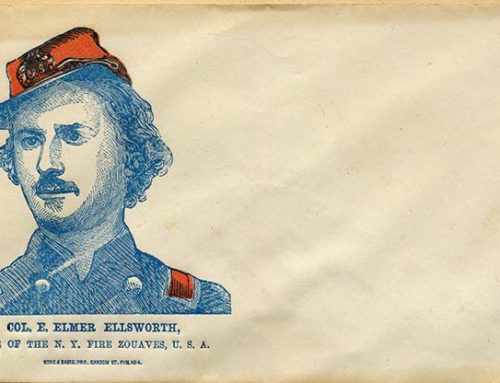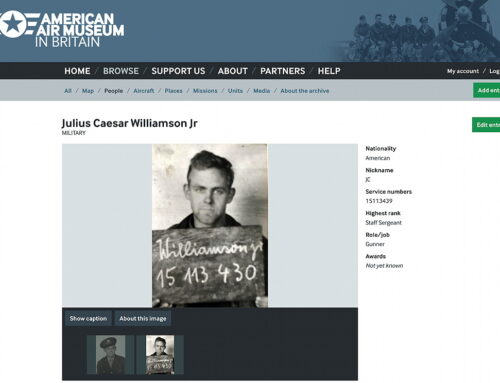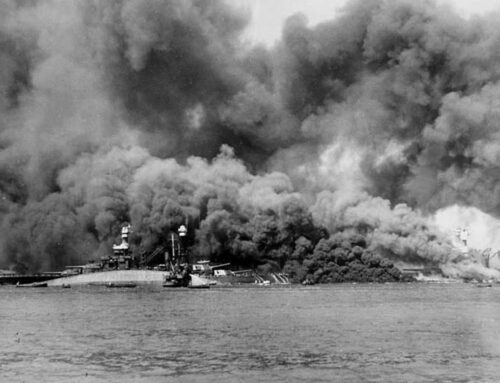In honor of Veterans Day, a post on accessing National Archives burned records.
On July 12, 1973, a disastrous fire at the National Personnel Records Center (NPRC) in St. Louis destroyed approximately 16-18 million Official Military Personnel Files (OMPF). No fire, with the exception of the loss of the 1890 census, has caused more dismay to archivists and genealogists. But now there is hope. At the recent National Archives Genealogy Fair, National Archives preservation specialist Ashley Cox reported on preservation efforts to make more of the surviving damaged records available to researchers.
Background on National Archives Burned Records
The records affected:
- 80 percent of Army personnel discharged 1 Nov 1912 to 1 Jan 1960 burned
- 75 percent of Air Force personnel discharged 25 Sep 1947 to 1 Jan 1964, with names alphabetically after Hubbard, James E., burned
- 6.5 million OMPFs salvaged
National Archives Burned Records Request in 2012
 In 2012, my husband requested his deceased father’s World War II Army records, but was told they had been destroyed in the 1973 fire. I waited a few months and made another request.
In 2012, my husband requested his deceased father’s World War II Army records, but was told they had been destroyed in the 1973 fire. I waited a few months and made another request.
Several months after the second request, for $60 we received about 60 pages of my father-in-law’s records, documenting his enlistment, discharge, and deployments from 1944-1946. All of the records had some fire damage (see featured at top), but most were readable including his induction record, which was only lightly charred.
I realize now that the second request was fulfilled after my father-in-law’s records were retrieved and evaluated for treatment as a B-file.
2017 Preservation Methods for National Archives Burned Records
Preservation Specialist Cox described the process involved in responding to a burned records request, but with waaaaay cooler preservation resources than my archives ever had! The requested records are retrieved, reviewed, and surface cleaned. If additional treatment is necessary, humidification and flattening (seen below) and/or mending is completed.
A new process called Content Recovery (CR) scanning uses infrared filters to make more information in damaged records readable, as seen below.
Requesting National Archives Burned Records
As always, request military records in ONE of the following ways:
- Online via e-VetRecs (easiest and simplest way to request)
- Fax or mail Request Pertaining to Military Records, SF 180 (11-15) form
- Hire an independent researcher
There is no separate or special request process
for burned National Archives documents.
Once your request is received, the archives staff member retrieves and evaluates the records. Then preservation process described above begins. Please be patient with your request because, as you can see, preservation methods are labor-intensive and time consuming. I’m very impressed with the lengths to which National Archives staff go to make these records usable.
The Take-Away
File a request for military records again, especially if you only made one request or your request was some time ago. Service numbers are a great help when making your request, so try to gather as much information on your relative or ancestor who served before making your request.
The slides and syllabus from Ashley Cox’s presentation, “A is for Archives, B is for Burn File: Accessing Burned Records at the National Archives at St. Louis,” with greater detail about NARA’s preservation methods, are available here.
For other Sassy Jane posts on military records research, click here.







I was in Viet Nam from September 1968 to September 1969. I kept all orders or promotion, DEROS and a few more odds and ends. I hesitate posting them due to Social Security Numbers and other personal data. Is there any way I can share them with appropriate persons?
Thomas, do you want to share them on social media instead of emailing them to the appropriate persons? After you scan the documents, use the blurring tool to obscure information in the digital image. Very glad you came home from Vietnam. Very glad my husband did too.
I wasn’t aware of the “burning” tool. I was initially thinking that I could put an index of the orders on facebook or whatever and email them by request.